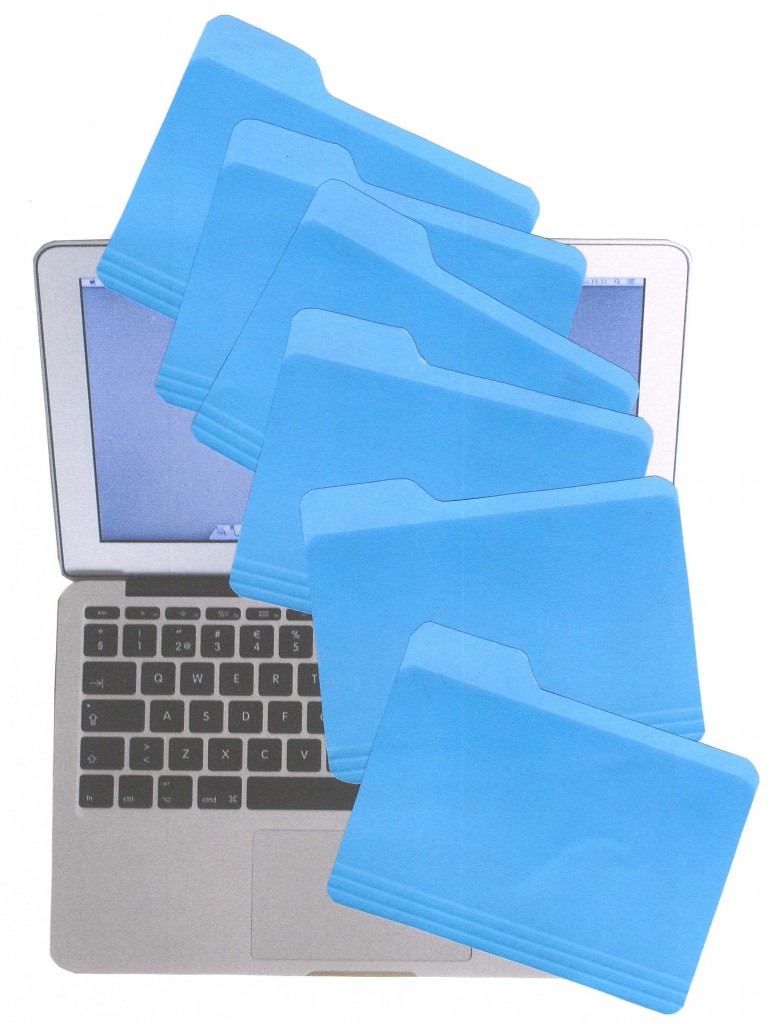I’m often hired to help a client dig out from under an onslaught of disorganized papers, untidy or non-existent files, unpaid bills, missed appointments, and general office chaos. We sort and categorize the piles, throw out reams of unnecessary documents, develop an effective workflow, and set up a paper filing system in a drawer or file cabinet.
The client thinks we’re done. Then I ask, “How do you organize your computer files?” The response is a blank look or an embarrassed, “I don’t.” When they switch on their computer I usually see a confetti of icons scattered across the desktop, not unlike the papers on the physical desk we just cleared.
It seems easy to simply use the search function to find a document, or use your email as a to-do list replete with attached documents. But it’s not the most effective way to organize your information.
You need structure.
Think of your folder structure as the backbone of your operations – be it running a business or a household. If your physical folder structure works, reflect that system in your digital structure.
Keep your digital folder structure broad and fairly shallow, perhaps folders for home, work, projects and activities. Since files are searchable you won’t need a lot of sub-folders. A uniform naming convention for the files within your folders will keep the contents organized.
Think about the words you use to describe the basic structure of your life. Draw out your folder structure on a piece of paper or in an outline. Decide what will live on your desktop – things you are currently working on or refer to frequently – and what will be kept in your documents.
You can create folders and your hierarchy in the Mac Finder or Windows Explorer. The Finder and Explorer are indispensible tools in managing and finding your digital files.
